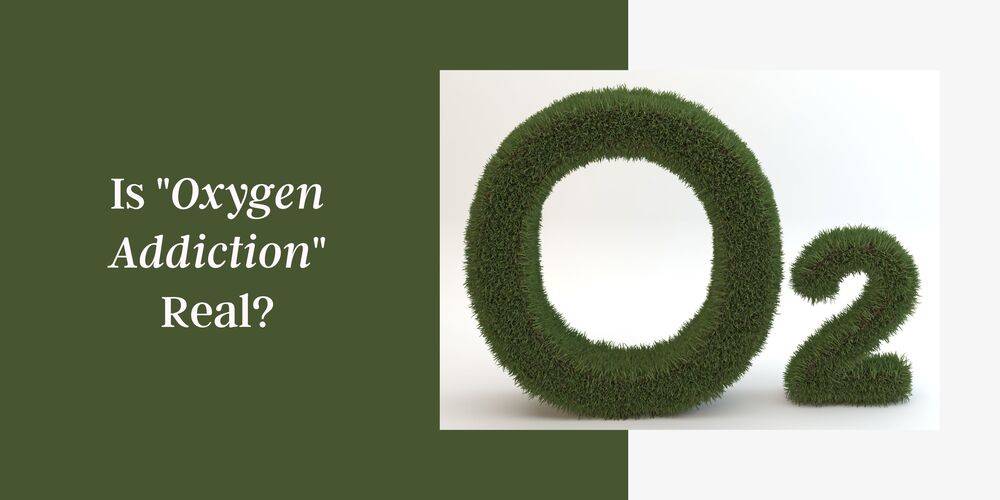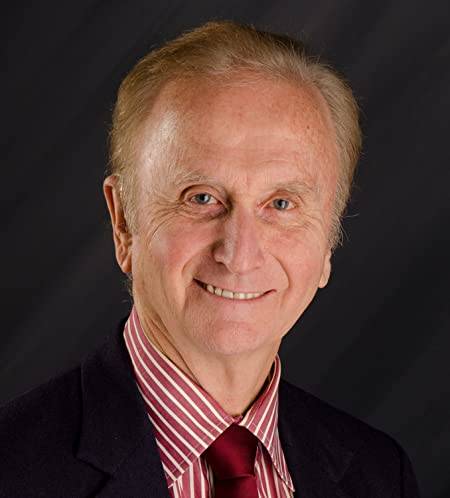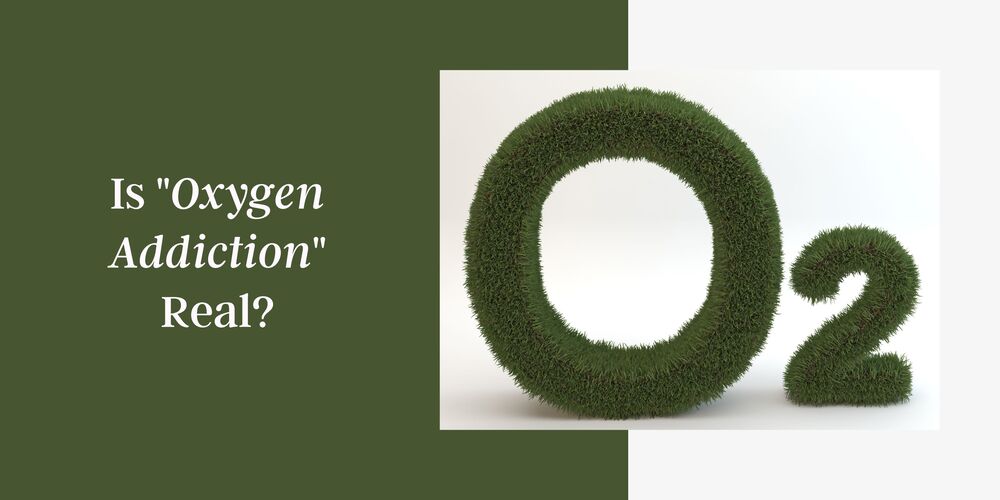Accro à l'oxygène ? Tout le monde est « accro » à l’oxygène.
Accro à l'oxygène ? Tout le monde est « accro » à l’oxygène.
26 septembre 2023, par Michael Grant White
La « dépendance à l’oxygène » est-elle réelle ? Poursuivez votre lecture pour découvrir ce que le Dr Danielle Rose, MD, a à dire sur la dépendance à l'oxygène.

De Mike :
"Tout le monde est "dépendant" de l'oxygène. Nous sommes morts sans lui pendant plus de quelques minutes. Le mot dépendance à cet égard vient principalement d'un malentendu ou d'un mot effrayant.
Dans un esprit de vérité et pour vous aider, ainsi que vos amis et vos proches, à acquérir et à maintenir une santé optimale, essayons d'aborder ce problème de manière plus intelligente. "
Dr Rose :
"Nous respirons actuellement environ 21 % d'oxygène, et nous savons que respirer moins que cela est une cause de symptômes et de problèmes d'hypoxie ou de divers tissus du corps qui ne reçoivent pas suffisamment d'oxygène pour fonctionner correctement.
Le corps obtient cet oxygène par les poumons, qui absorbent l'oxygène de l'air et libèrent le dioxyde de carbone issu des processus métaboliques du corps. Le corps a une certaine capacité à s’adapter plus ou moins à ce dont il a besoin pour fonctionner et il le fait, mais souvent pas de manière optimale.
Cela peut se faire beaucoup plus facilement avec de petits changements qu'avec de grands changements, nous pouvons donc réduire progressivement la quantité d'oxygène dans votre air et votre corps peut progressivement s'adapter comme il le fait avec un changement d'altitude ou lorsque des problèmes chroniques affectent le fonctionnement de vos poumons, mais à terme il ne pourra plus fonctionner normalement avec des quantités de plus en plus faibles.
Il en va de même lorsque nous intervenons en ajoutant plus d’oxygène ou de nombreuses autres substances, le corps s’adapte progressivement et modifie le fonctionnement de son système pour en avoir plus.
Exercice (les exercices physiques, les exercices de respiration, le niveau d'activité, le travail respiratoire sont tous inclus ici) par rapport au repos (le repos lorsque l'on est en bonne santé, le repos lorsque les poumons sont malades auront également de grandes variations dans la façon dont l'oxygène est absorbé par le corps) avec et sans supplément. l'oxygène affecte également divers aspects de son efficacité.
Les poumons absorbent l'oxygène, la quantité de ventilation et la quantité de perfusion sanguine, tout cela doit être en place pour une absorption maximale d'oxygène par les poumons.
Après absorption par les poumons et l'hémoglobine, les tissus doivent pouvoir l'absorber dans les cellules et dans les mitochondries des cellules, qui sont toutes affectées par des milliers de processus métaboliques différents.
Contrairement à l'oxygène présent dans l'hémoglobine, qui peut être mesuré par un appareil d'oxymétrie de pouls, l'oxygène réellement présent dans les tissus n'est pas facile à mesurer et on ignore beaucoup de choses sur divers problèmes empêchant une quantité adéquate d'oxygène de pénétrer dans les tissus et les mitochondries cellulaires. Beaucoup de ceux qui étudient de manière approfondie l’oxygène parlent beaucoup de cette absorption/perfusion.
La plupart du temps, un supplément d’oxygène est administré aux patients présentant un problème pulmonaire grave. L’oxygène supplémentaire aide le corps à surmonter certaines de ses limitations dues à la maladie et à obtenir suffisamment d’oxygène pour fonctionner et guérir. Cliniquement, cela permet au patient de se sentir mieux car il y a moins de stress respiratoire et une meilleure oxygénation cellulaire.
À mesure que l'état du patient s'améliore, l'oxygène est sevré pour permettre au corps de s'habituer progressivement à assurer les mêmes fonctions avec moins d'aide, tout comme on ne marche pas sur une jambe cassée sans plâtre et on ne court pas. marathon juste après le retrait du plâtre.
Vous permettez à votre corps de retrouver progressivement une meilleure fonction à des rythmes plus lents. Nous savons que le simple fait de maintenir le corps sous oxygène en continu au-delà de ce à quoi il est capable de s'adapter entraînera des dommages permanents aux poumons, appelés toxicité pulmonaire de l'oxygène. C'est pourquoi l'oxygène continu n'est pas recommandé, sauf si votre vie est en danger sans lui. .
Ainsi, il existe une gamme d’oxygène utile pour le corps là où trop ou trop peu pose des problèmes. C’est ce qu’on appelle la fenêtre thérapeutique, comme c’est le cas pour d’autres substances.
Cela peut différer d'un patient à l'autre ou même chez un même patient au fil du temps et de l'évolution de la maladie, en fonction du patient, du moment de sa vie, de la génétique, du métabolisme, de l'exercice, etc.
Une exposition intermittente à une concentration plus élevée d'oxygène avec de nombreuses heures de respiration « normoxique » entre les expositions plus élevées n'a pas entraîné de toxicité pulmonaire à l'oxygène.
Beaucoup ont signalé une amélioration de la fonction avec de l’oxygène intermittent, en particulier lorsqu’ils font de l’exercice. Ainsi, comme pour tout aliment, supplément ou médicament, l’oxygène doit être pris avec précaution, avec modération et en tenant compte de toutes les variables affectant votre santé personnelle.
De Mike :
Les antioxydants pourraient être un facteur clé.
L’oxygène est non seulement nécessaire à toutes les actions cellulaires de votre corps, mais il crée également des radicaux libres comme sous-produit de la combustion de l’O2. Un peu comme ce qu'est la fumée pour allumer un feu. Les antioxydants aident au métabolisme cellulaire et compensent cette « fumée ».
À proprement parler, plus nous absorbons d’O2, plus nous devrions avoir d’antioxydants. Nous entendons rarement parler d’un médecin prescripteur d’oxygène recommandant des antioxydants à toute personne sous oxygène. Cela peut ou non provenir d'un modèle médical traditionnel qui affirme/croit souvent que la nutrition n'a pas grand-chose ou rien à voir avec la santé.
Nous vous suggérons si vous souhaitez optimiser votre utilisation d'O2, d'augmenter vos antioxydants tels que A, B, C, D, E, la coenzyme Q10, le germanium, la superoxyde dismutase (SOD) et le soufre organique.
Certains types d’aliments verts peuvent aider à transporter un supplément d’oxygène. Demandez à votre professionnel de la santé préféré une bonne formule de transport d’oxygène avec des antioxydants et des aliments verts.
Combinez les générateurs de chimie et d'oxygène O2E2 ainsi que le kit de respiration optimale mécanique pour des étapes majeures vers la santé et la longévité.
Apprenez à mieux respirer avec le kit de maîtrise de la respiration optimale.

Rencontrez Mike White
Rencontrez Michael Grant White, le coach de respiration optimale et obtenez des informations concrètes sur votre développement respiratoire, votre santé et votre longévité.




